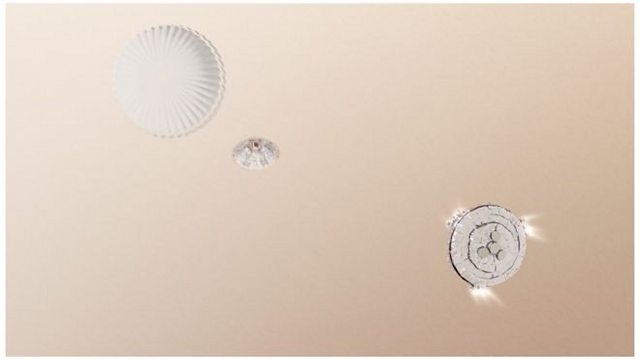Has the Latest Mars Lander Failed?
The ESA lost contact with its Schiaparelli Mars lander. Also, banning HFC refrigerants and the new Cell Atlas.
At the time of transmission, the European Space Agency still have no contact with the Schiaparelli Mars lander
Banning HFCs
In 1985 scientists reported that there was a depletion in the amount of ozone in the stratosphere, creating a giant hole above the Antarctic. Ozone is a form of oxygen which absorbs most of the UV radiation from the sun, helping to protect the earth. The cause of the hole was the release of chemicals used in refrigeration and in expanding foams - halons, freons and chlorofluorocarbons or CFCs.
As a result, the Montreal Protocol, which ordered that CFCs were systematically phased out, was signed, and now the hole is shrinking. CFCs were replaced with HFCs – hydro fluorocarbons, which have little effect on ozone. But they are potent greenhouse gases. The latest update to the Montreal protocol has just been made in Rwanda, and now HFCs are on the banned list too, but what's the alternative?
New Cell Atlas
It may be a surprise to discover that we don’t know how many cell-types we have in our bodies. The Human Cell Atlas project is a huge international consortium which aims to identify and map every single bodily cell. What's more, the medical benefits could be huge.
Picture: Artwork: The retrorockets should have fired for about 30 seconds, credit: ESA
Presenter: Marnie Chesterton
Producer: Fiona Roberts
Last on
More episodes
Next
Broadcasts
- Thu 20 Oct 2016 21:32GMT91Èȱ¬ World Service except East and Southern Africa & News Internet
- Fri 21 Oct 2016 01:32GMT91Èȱ¬ World Service Americas and the Caribbean
- Fri 21 Oct 2016 02:32GMT91Èȱ¬ World Service Online, Europe and the Middle East & UK DAB/Freeview only
- Fri 21 Oct 2016 03:32GMT91Èȱ¬ World Service East Asia & South Asia only
- Fri 21 Oct 2016 04:32GMT91Èȱ¬ World Service Australasia
- Fri 21 Oct 2016 06:32GMT91Èȱ¬ World Service East and Southern Africa & Europe and the Middle East only
- Fri 21 Oct 2016 14:32GMT91Èȱ¬ World Service except News Internet
Podcast
-
![]()
Science In Action
The 91Èȱ¬ brings you all the week's science news.


